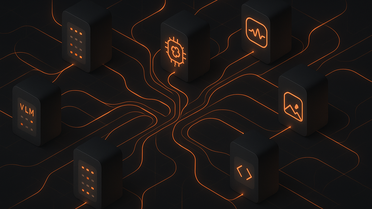
Azion Named a Leader in G2 Winter 2026 Reports
Azion is a Leader in CDN & High Performer in 6 security categories in the G2 Winter 2026 Reports. With 100% user satisfaction, see how our edge platform delivers ultra-fast performance & enterprise-grade security. Try free.

DEC 8, 2025 • 5 min read

Azion Real-Time Events: Real-time observability for modern applications
Azion Real-Time Events (RTE) delivers real-time observability with full data access, no sampling, low latency, and flexible querying. Learn how RTE enhances security, performance, and operational efficiency for modern applications.
DEC 11, 2025 • 5 min read




Beyond the Cloud: Deploying Secure High-Performance MCP Servers for Real-Time AI on a Global Network
Go beyond the traditional cloud. This guide details how to deploy secure, high-performance MCP servers for real-time AI applications.
DEC 1, 2025 • 21 min read



How Azion Cuts Cloud Bills — Performance, Compression, and Distributed Architecture That Slash Egress
Learn how distributed architectures dramatically reduce egress, latency, and observability costs by moving compute, caching, and compression closer to users. This article combines benchmarks, real-world transformations, and practical patterns to show how Azion helps teams optimize traffic, lower TCO, and build faster, more efficient applications.
NOV 17, 2025 • 10 min read


The Invisible Cost: How Distributed Object Storage Rewrites Cloud Economics
How distributed storage changes the physics of delivery — slashing egress and replication fees, offloading origin compute, and turning unpredictable cloud bills into predictable,
NOV 17, 2025 • 8 min read


The Hidden Cloud Tax: How a Distributed Web Platform Rewrites FinOps
Learn how moving compute and assets closer to users via a distributed architecture can reduce cloud egress by up to 80% and backend compute by 60%. This article explores the concept of "computational gravity" and provides a technical roadmap for shifting FinOps from reactive cost management to an architectural discipline for predictable TCO and competitive advantage.
NOV 17, 2025 • 8 min read


The Decentralized Infrastructure Revolution — How Latin America Can Close the Digital Gap with Distributed Architectures
Bridge Latin America's Digital Divide with Decentralized Infrastructure. Learn how it cuts latency, costs, and enables vital digital services.
NOV 3, 2025 • 10 min read



How to Implement HSTS and CSP at the Edge with Azion Applications
Practical guide to apply HSTS and Content Security Policy (CSP) at the edge using Azion. Step by step with Rules Engine examples, rollout checklist, monitoring, and before/after metrics to improve security and reduce downgrade, MITM, and XSS risks.
SEP 9, 2025 • 7 min read


Introducing Workloads, Edge Connector, Custom Pages, and API v4
Discover Azion's latest innovations: Workloads, Edge Connector, and Custom Pages, along with API v4 - a platform change that transforms how you develop and scale applications at the edge.
AUG 5, 2025 • 4 min read


Beyond CDN Wars: Why Azion's 280% Performance Advantage Makes Fastly and Akamai Obsolete
Fastly celebrates 57% TTFB improvements over Akamai while enterprises migrating to Azion achieve 280%. Discover why CDN comparisons have become obsolete and how modern web platforms are delivering 5x performance gains with real enterprise transformations.
JUL 25, 2025 • 13 min read



Enumerating Trouble: How Exposed Identifiers Open the Door to Enumeration Attacks
Why enumeration attacks remain a blind spot in modern security strategies and how exposed identifiers create cascading failures that traditional monitoring misses? A critical analysis of detection challenges and defense approaches.
JUL 20, 2025 • 12 min read



Building Resilient Applications: How to Mitigate Vendor Outages
Strategies to build resilient applications and mitigate the risks of vendor outages with end-to-end infrastructure and high availability.
JUL 4, 2025 • 12 min read


Visual Language Models (VLMs) Domain Adaptation with LoRa for Real-Time Fraud Detection
Learn how AI Inference, along with domain adaptation techniques like LoRa, can be leveraged to deploy AI models optimized for specific fraud scenarios, ensuring real-time detection and prevention capabilities.
MAY 29, 2025 • 10 min read

Subscribe to our Newsletter
Get the latest product updates, event highlights, and tech industry insights delivered to your inbox.